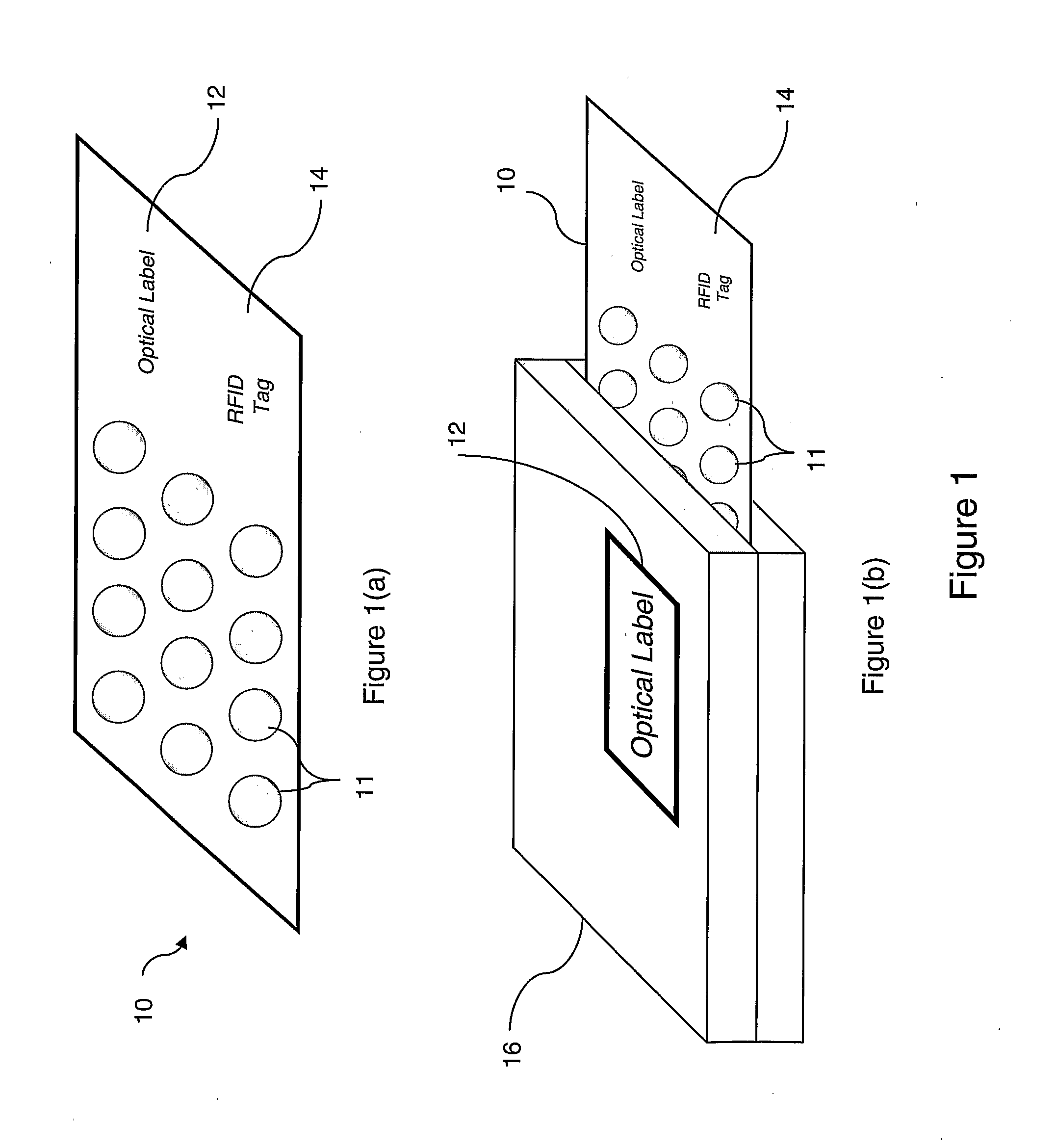Method and device for obtaining item information using RFID tags
a technology of item information and rfid tags, which is applied in the field of methods and systems for obtaining information about items, can solve the problems of difficult and more expensive to convincingly label counterfeit goods as if they are genuine, rfid tags cannot be so easily copied, and active and semi-active tags are generally more expensive than passive tags, so as to prevent false pedigree generation
- Summary
- Abstract
- Description
- Claims
- Application Information
AI Technical Summary
Benefits of technology
Problems solved by technology
Method used
Image
Examples
Embodiment Construction
[0059]Embodiments of the present invention will now be described with reference to the accompanying drawings. FIGS. 1(a) and 1(b) represent two ways in which a pharmaceutical product may be packaged and labelled. In FIG. 1(a), a “blister-pack”10 of pills 11 is shown having attached thereto an optical label 12, which may be a barcode, a 2-D code, a matrix-code, or a label with an item identification number printed thereon for example, and an RFID tag 14. In FIG. 1(b), a similar blister-pack is shown, but the optical label 12 is printed on an outer packet 16 associated with the blister-pack 10. The optical label 12 is also shown printed on the blister-pack 10, but FIG. 1(b) illustrates the point that while an optical label generally needs to be visible to be read, an RFID tag may be readable when located within a pack, or even within an object itself. It will also be noted that neither the optical label nor the RFID tag need to be physically attached to the item in question. Either ma...
PUM
 Login to View More
Login to View More Abstract
Description
Claims
Application Information
 Login to View More
Login to View More - R&D
- Intellectual Property
- Life Sciences
- Materials
- Tech Scout
- Unparalleled Data Quality
- Higher Quality Content
- 60% Fewer Hallucinations
Browse by: Latest US Patents, China's latest patents, Technical Efficacy Thesaurus, Application Domain, Technology Topic, Popular Technical Reports.
© 2025 PatSnap. All rights reserved.Legal|Privacy policy|Modern Slavery Act Transparency Statement|Sitemap|About US| Contact US: help@patsnap.com



